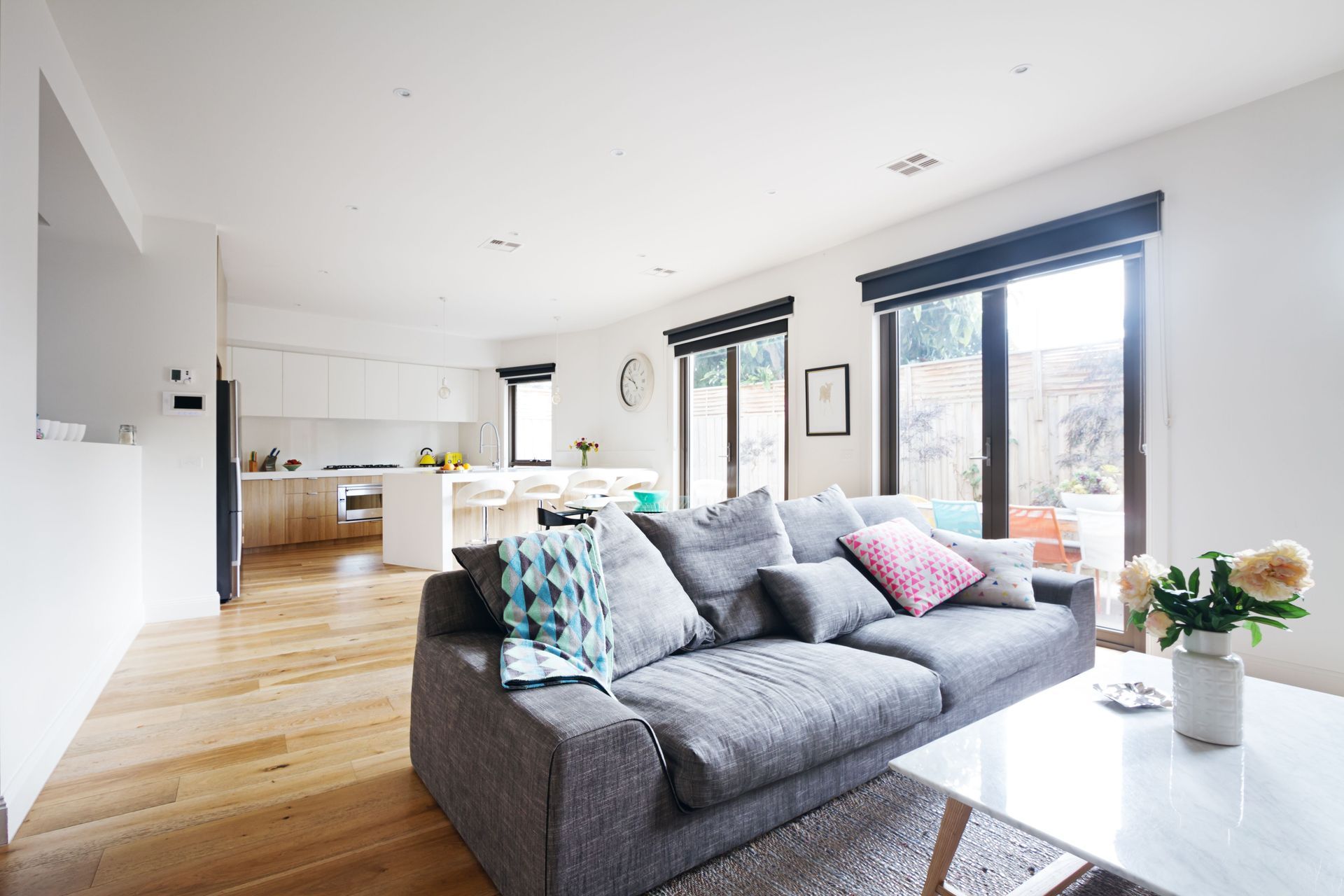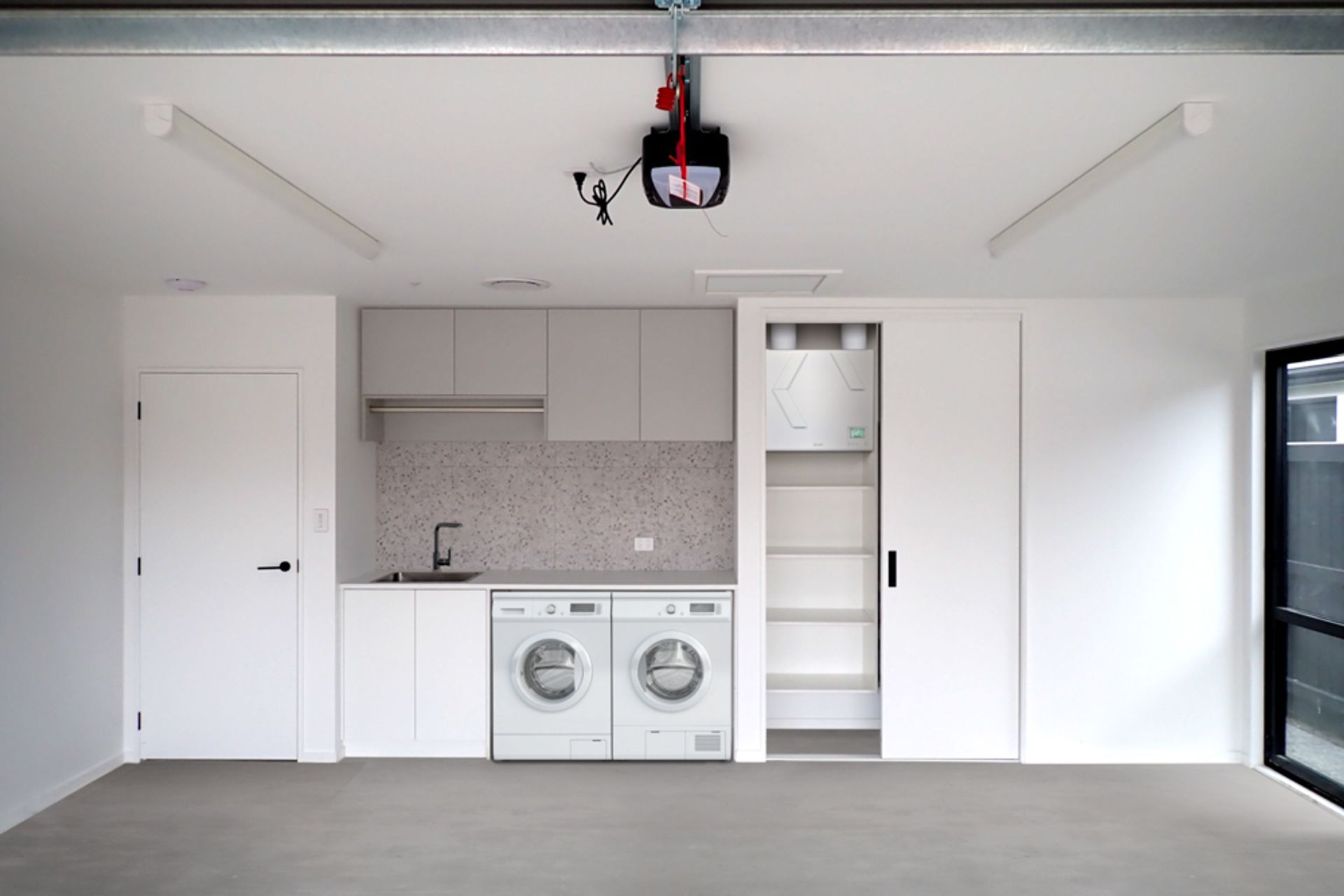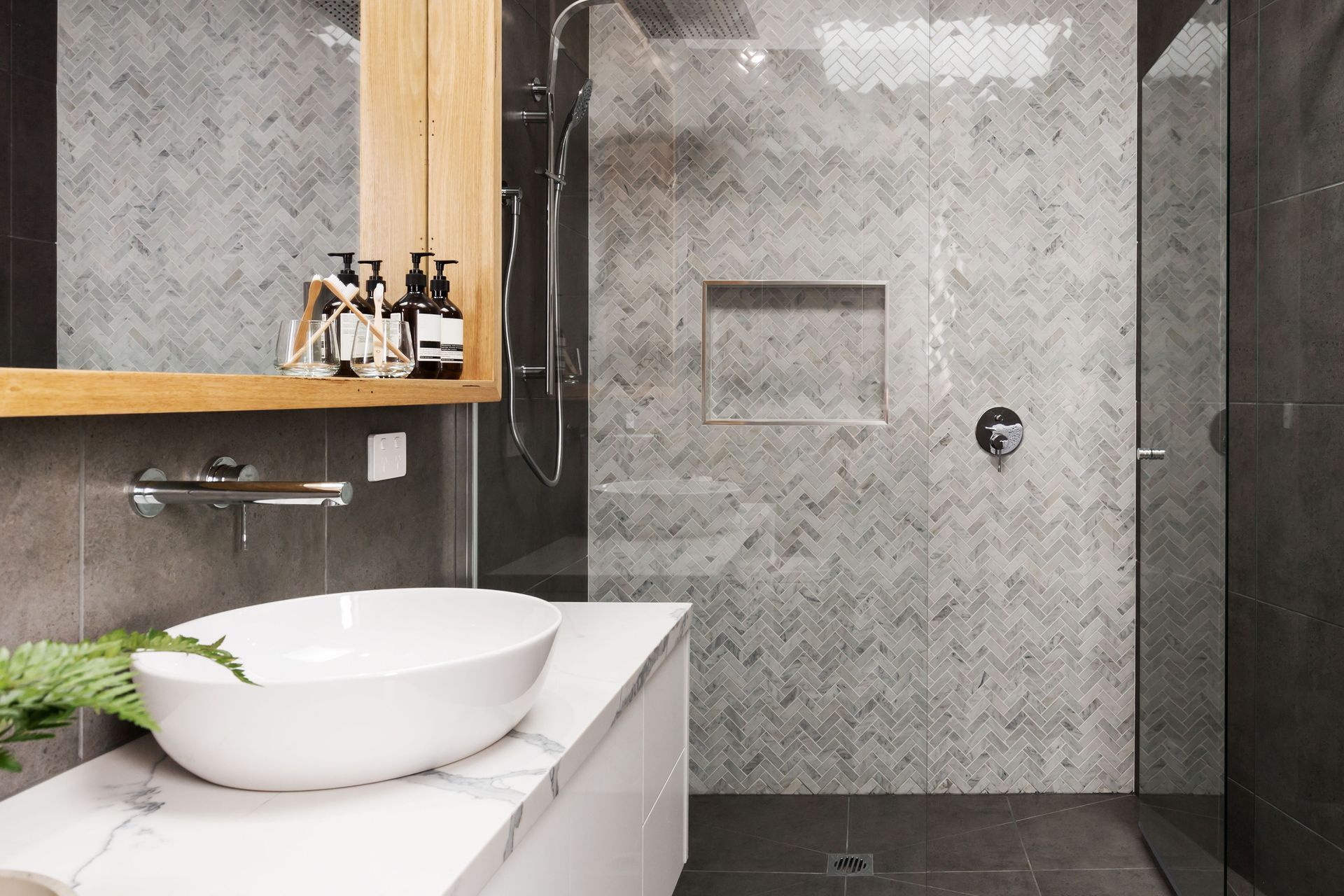The importance of good home ventilation: 6 tips you need to know
Written by
04 November 2021
•
9 min read

Creating a healthy living environment is important when renovating or building a new home– you will want the perfect indoor climate year-round. In addition to efficient heating and cooling, your design should consider including the optimum amount of fresh air.
Current building regulations now demand homes to be built more airtight as they are subjected to higher insulation standards, but this often means a lack of natural ventilation and can lead to a build-up of moisture-laden stale air within the home.
The option of leaving doors or windows open to allow more fresh air to enter is often not the solution from an outdoor noise, weather or security perspective and can make heating the home less energy efficient.
We sat down with Evan Rayner, Regional Sales Manager at Mitsubishi Electric to learn more about what those looking to build or improve their home should consider when it comes to ventilation.

Why it pays to ventilate
With over 25 years of ventilation experience, Evan has noticed a big shift in perceptions in recent years: “Ventilation is no longer just a nice to have. It’s becoming an essential part of a modern build, not just in terms of meeting codes.”
Mould and dampness can compromise both building materials as well as furnishings inside the home, especially window sills, curtains and carpets. As a result, Evan says a quality balanced pressure ventilation system such as Mitsubishi Electric’s Lossnay Range, is a small price to pay to protect your overall investment in the years to come. “It actually doesn’t cost a lot to buy or to even run a ventilation system and I know from experience with our Mitsubishi Electric Lossnay Systems they will likely last you over 20 years."
Evan says ventilation ensures your materials and furnishings will stand the test of time, and are an investment in the home as well as the wellbeing of those living in it.
“I’ve been to a house that was only 2 years old with mould and mildew issues. It was so bad that you could see the lines of timber joins on the wall, through the wallboard. It was obvious they weren’t opening their windows to let enough fresh air in—what a waste of brand new furnishings and materials for what would have likely been less than 1% cost of the overall build to have a ventilation system!
After installing a Mitsubishi Electric Lossnay Fresh Air Heat Recovery Ventilation System into the property, those lines were gone within the week and a month later the owners described it as living in a completely different house.”

Mitsubishi Electric: ventilation solutions to suit most New Zealand homes
Mitsubishi Electric offers a full Lossnay Fresh Air Heat Recovery Ventilation Range from in-ceiling whole home heat recovery solutions like the VL220, to ducted and wall-mounted single room models. Most recently Mitsubishi Electric launched what Evan describes as the "game-changer”, the new slimline Vertical Lossnay Range.
Featuring a small, upright footprint, the Vertical Lossnay Fresh Air Heat Recovery System can be placed in the garage or a utility cupboard and therefore isn’t limited to an in-roof installation.
“It’s not only the perfect answer to retrofit projects where accessing roof spaces can be difficult, they are great for new builds with small roof cavities and those wanting easy access for maintenance, too.
But not every home needs a large ducted unit and sometimes the roof space doesn’t allow for one. This is where our range of single room models are a hit as they allow Lossnay Ventilation to be installed in apartments, studios and spaces with limited roof space." Lossnay Single Room is available as either a ducted unit or as a wall-mounted model.
"Our Lossnay range means we can find a solution to suit most New Zealand homes.”

6 tips to consider when ventilating your home
1) Talk to your ventilation expert early in a new-build planning process
It can be easy to jump straight into the design aspect of planning and leave operational considerations such as ventilation until later on, however Evan says this can be the first mistake made; “Too often people come to us about ventilation once their build is in progress or even complete and find their plans make installation difficult, more costly and often results in a 'make do' application that isn’t what they were initially after.
While Mitsubishi Electric pride ourselves on finding a solution no matter the installation challenges, by bringing in a ventilation expert in the early planning stages you can save future headaches and walk away with a system that is integrated into your plans and maximises efficiency.”
For modern architectural builds, be sure to consider your total home comfort requirements in one plan. Mitsubishi Electric‘s Lossnay Ventilation can be integrated with whole home ducted air conditioning to offer a complete home heating, cooling and ventilation solution. This is when talking to an expert early pays off says Evan, “A combined air conditioning and ventilation system is a perfect example of something that is best to bring in an expert early in the process for. Installation, ducting and wiring is far easier before the ceiling is put in place, allows flexibility with outlet placement and Lossnay’s heat recovery will add further efficiency to the air conditioner when in operation.”
2) Make use of what is free with heat recovery technology
Ventilating our indoor spaces is more important than ever, but they should also be as energy efficient as possible.
Mitsubishi Electric’s unique heat recovery technology recovers up to 85% of the heat energy from the outgoing stale air which is then used to pre-warm (or pre-cool) incoming fresh air. “Why not take that warm air from the sunniest side of the house to pre-warm the outdoor air being filtered in? Or use the air you have already paid for to heat,” says Evan.
“Heat recovery means any heating or cooling appliance does not have to work as hard to reach the desired room temperature–providing savings on your energy bill. It just makes sense.”
3) Place ventilation ducts and grilles to maximise efficiency
As Evan explains, “Placement of ducts and grilles are almost as important as the system behind it.
Often ventilation systems are not working as efficiently as possible because they are drawing air from the coldest parts of the home and not taking advantage of those areas which are naturally warmer. It goes back to heat recovery, the best thing you can do is make use of that free energy.
Grilles available today are far more stylish than they used to be, and they have the ability to be customised and discreetly integrated into the architectural design of a building.”
4) Not all air is created equal—fresh outdoor air rather than air from the roof-space is key to ensuring indoor air quality
Many may be surprised to learn that not every system on the market utilises fresh air from outside; many systems operate by extracting air from the roof space. However, to achieve compliance with the Ventilation Standard NZS4303:1990 of the New Zealand Building Code, a building’s ventilation system is required to draw fresh air from the outside in order to achieve acceptable indoor air quality.
“Not all air is created equal. The absence of significant air movement common in attics means the air is likely to be stale. In addition, build-up of dust, dirt and other contaminants such as mould, insect and rodent droppings makes this air much harder to filter before it is distributed through your home—it’s not what you want to be breathing in.
All products in our Lossnay Ventilation range draw fresh air from outside and filter this to maximise air quality. While systems that draw from the roof are less common since the standard was introduced, these systems can still be found in the market to target those wanting a retrofit solution for an older home.”
5) Meet the requirements of your home, not just the Building Code
The New Zealand Building Code often asks for the bare minimum and by using this as a benchmark, the actual ventilation requirements of the property might not be met. As Evan explains, “New Zealand’s standard is pretty low, especially when compared to overseas.
"Our code in New Zealand asks for a 0.35 air changes per hour however if you are really wanting to maximise your home's air quality, this should be higher. When designing a Lossnay system, our authorised Mitsubishi Electric installers refer to the higher UK standard of 0.5 air changes per hour.
Capabilities like this are important as they can easily be overlooked by price, but a low performing system can result in unmet expectations and ultimately a wasted investment.”
6) Complement your system with a separate exhaust fan for wet areas such as bathrooms and laundries
“While many systems—including Lossnay—can draw from moisture laden air, to get the most energy efficiency out of your heat recovery system I recommend installing a separate Mitsubishi Electric Ducted Exhaust Ventilation Fan in wet areas such as bathrooms. While a bathroom can be warm during showers, when not in use they are often the coldest rooms in the home—so why combine that cold air to the air you are hoping to recover heat from and reduce the overall temperature you can recover? Exhaust fans do an excellent job at removing steam and moisture quickly and are turned off when not needed, saving energy use.”

The Key Takeaway: ventilation is an investment in your health and home
Mechanical ventilation such as Mitsubishi Electric’s Lossnay Fresh Air Heat Recovery Ventilation Range is not only a small price to pay to protect your home investment, it’s vital for the health of the home and the wellbeing of the occupants.
We all know cooking, washing and condensation can make a home damp, but the biggest contributor is your breath and as Evan aptly puts it, “There's no avoiding that!”
So if you are embarking on a new build or renovation project get in touch with Mitsubishi Electric to talk about their extensive range of Lossnay Fresh Air Heat Recovery Ventilation Solutions.
